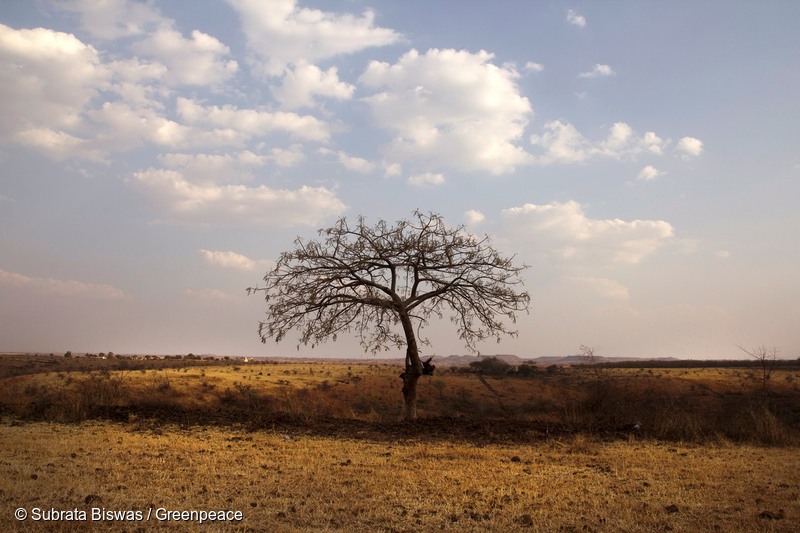
This year, India witnessed the hottest March on record, followed immediately by intense heatwaves throughout April across various parts of the country. Temperatures across East, Central, and Northwest India crossed 40 °C in the plains, 37 °C in coastal areas and 30 °C in hilly areas. This isn’t an anomaly. India has been experiencing a steady increase in average high temperature every single year over the past few decades, which is a direct result of the climate catastrophe.
Heatwaves are formed as a result of air being trapped by a high pressure dome, or cap, in the upper atmosphere which forces warm air downwards. This prevents the air near the ground from rising, thereby preventing cloud formation and precipitation. Adding to the precarity of the problem is unpredictable seasonal rain cycles, particularly the western disturbances (which would typically alleviate the situation), as surface wind patterns are becoming increasingly irregular due to global warming.
This isn’t all though. The Indian Meteorological Department declares a heatwave when temperatures rise by 4.5 °C to 6.4 °C above normal temperatures for a region, and a temperature rise above 6.4 °C is declared as a severe heatwave. However, heat shouldn’t be the only concern as excess humidity can further exacerbate an already precarious crisis. The distinction between measuring dry-bulb temperature and wet-bulb temperature, which factors in humidity present in the air, is extremely important. A wet-bulb temperature of 35 °C prevents human beings from reducing their body temperature naturally through the process of sweating, which can have potentially fatal consequences.
Though such events have been rare so far, the IPCC’s Sixth Assessment Report states that they are going to be increasingly likely if human-induced climate change is not curtailed. According to the Report, densely populated South Asian regions, including the Ganges and Indus River basins, are at a high risk of facing potentially deadly heatwaves with wet-bulb temperature exceeding the critical threshold of 35 °C, endangering millions of underprivileged peoples across the subcontinent.
Impacts and Inequalities
There are different dimensions to the impacts of heatwaves in India. The question of who is responsible and who gets impacted is critical in this regard and necessitates a closer analysis. Heatwaves can cause various illnesses including heat cramps, heat strokes, and hyperthermia. Underprivileged populations—including women, children, the elderly, daily wage earners, construction labourers, factory workers, and the homeless—have negligible adaptive capacities and remain at a much higher risk of facing the brunt of such man-made disasters.
Agricultural practices are impacted as well, as farmers across India reported major losses in Rabi crop yields due to direct heat as well as reduced irrigation capabilities. The heatwave has also caused increased glacial melting—which reduces the availability of water for people who depend on glaciers for water use, and it has also caused an uptick in forest fires.
The Union government recently came out with a health advisory suggesting protective measures against the heatwave, but much like several other administrative measures, it does not take into account the realities of the urban poor on ground. The advisory suggests protective measures like staying indoors (what about those who can’t afford to?), staying hydrated, eating seasonal fruits and vegetables (when India ranks 94th among 107 countries on the Global Hunger Index 2020), using protective headgear and a number of other measures that don’t help protect the most vulnerable. All these measures ignore the capacities of the majority of Indians. It is almost as if the care and concern for the population is restricted to the relatively well-off, while at-risk underprivileged citizens are left to deal with the issue without any substantial supportive mechanisms.
But this also necessitates asking who is responsible for much of this crisis. Corporations that have polluted our atmosphere almost beyond repair need to work on just reparations towards the environment as well as local and indigenous communities. Governments need to step up and devise national, and local, heat codes, or standard operating procedures, to secure lives and livelihoods in the event of future heatwaves for equitable and compassionate relief. The climate crisis will challenge/threaten civilisations across multiple fronts in foretold ways. But the good news is we already know the solutions; all we need to do is act now—and fast.
Author: Upamanyu Das works on socio-environmental justice and decentralised alternatives. He has previously worked with Kalpavriksh, The Global Tapestry of Alternatives, and India Development Review.
